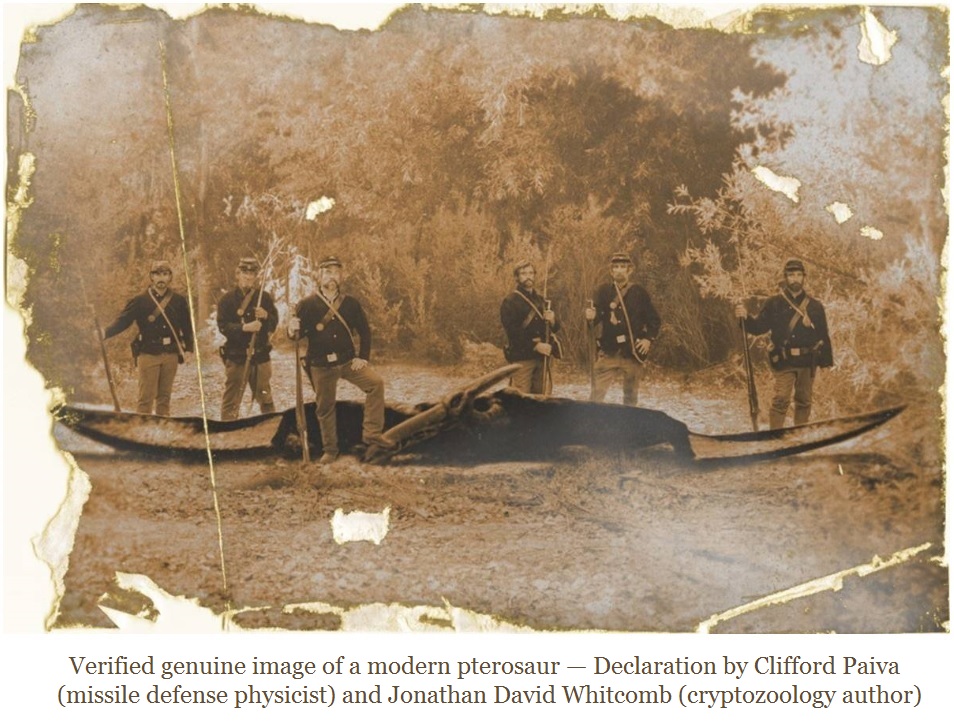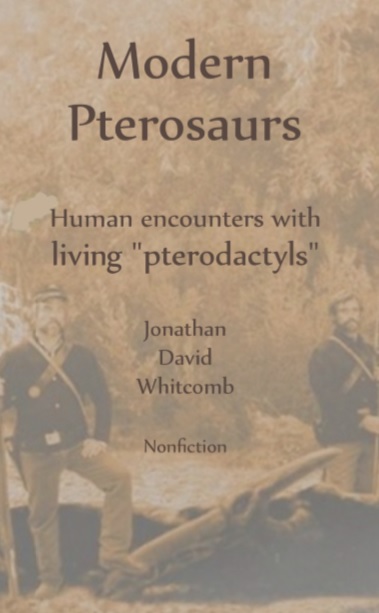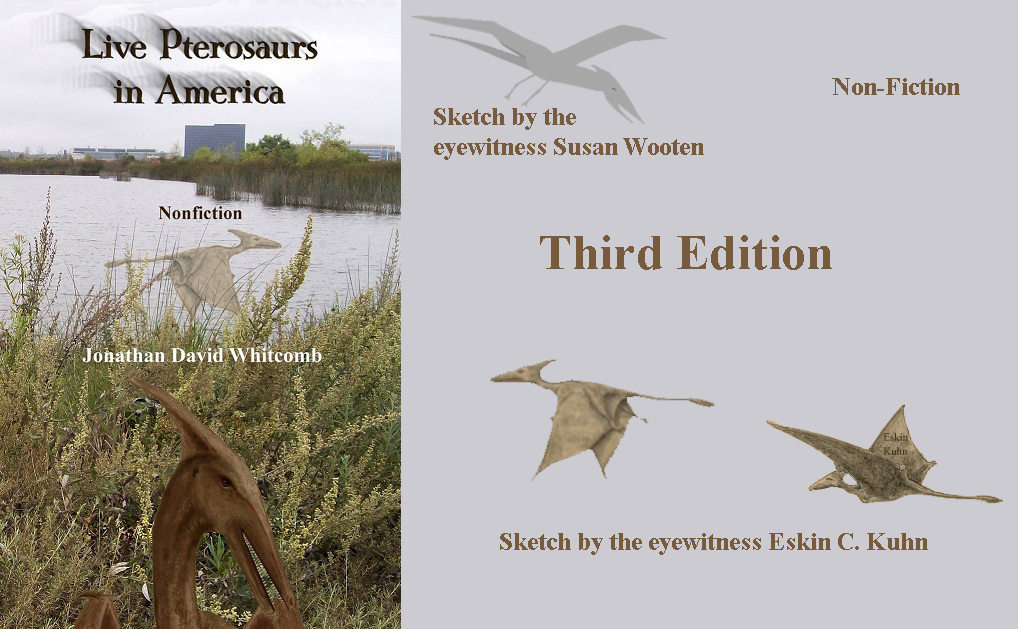Let’s consider the kinds of comments made by skeptics of the photograph we now call “Ptp,” with answers taken from the upcoming cryptozoology book Modern Pterosaurs.
Criticism: It’s obviously a fake, probably made with Photoshop.
Answer from page 100, from Tom Payne, who remembers the Ptp photo from a book he saw in the 1970’s:
I have a degree in Computer Science. I can tell you that technology [Photoshop] wasn’t available to modify a photo like this before about 1980.
Criticism: The soldier on the far left has missing fingers, showing evidence of a Photoshop hoax.
Answer from page 80 (caption under Figure-11):
The apparently missing fingers and thumb of this soldier can be explained without any reference to a hoax using Photoshop. In fact, such digital image manipulation makes no sense, if the purpose had been to make an image that looked like men standing near a recently killed pterosaur.
Answer from page 81:
But how could digital manipulation cause those fingers to disappear? How else except in pasting a rifle-image onto an image of a soldier holding his arm to one side? . . . Why would any hoaxer search for some old Civil War photo that might have a soldier holding out his arm as if holding a rifle but without the rifle? Why would any American Civil War soldier stand for a photograph while holding out his arm as if holding onto his rifle but without the rifle? How could any soldier in military history be so foolish as to hold out his arm, as if holding his rifle, when he had forgotten to bring the rifle for the photograph?
Criticism: This photo is a hoax, made for a television show.
Answer from page 73:
. . . we need to be clear about another photograph. A hoax was created, around the year 2000, apparently made in imitation of what we now call Ptp. Beware of falling into the trap that others have: confusing the two.
.
The photograph called “Ptp” (not to be confused with a recent photo made for a TV show)
.
Conclusion
What may appear, on the surface, to be damning evidence that Ptp is a hoax is, in reality, easily answered. Not only does the apparent evidence for a fraud fall apart, under close examination, but we actually have direct and indirect evidence that this old photograph, with apparent Civil War soldiers, actually comes from that period of history, and those men are probably actual American soldiers.
###
Copyright 2017 Jonathan Whitcomb (“The Old Pteranodon Photograph”)
.
Book About the Pteranodon Photograph
Glen Kuban, a critic of living-pterosaur investigators for years, made a mistake regarding Ptp in his long online publication “Living Pterodactyls.” (He also made many other errors in that page, so it will not here be linked to.) [He confused two different photos.]
.
Is “Modern Pterosaurs” a Creationist Book?
The nonfiction cryptozoology book Modern Pterosaurs should be published well before the end of April, 2017. The front cover gives no hint that it supports a Biblical Old Testament point of view, but the back cover clearly does . . .
.
American Civil War Pteranodon photograph
This is not about the hoax-photograph, with Civil War reenactors, done for the Freakylinks TV series that was on the Fox Network from 2000-2001. . . . The photograph we’re examining here is called “Ptp” and has been around much longer. It was surely used, by the producers of Freakylinks, as a model for their crude imitation.
.
The ultimate shocking nonfiction [book]: Scientific validation for the old photograph that was neglected for decades. This has now been declared to have a genuine photographic image of an extant pterosaur, with layers of evidence for authenticity.
.
A skeptic may assume, consciously or not, that he or she is objective while ridiculing me, but I am the expert here. Along with all the skeptics, I am human. Yet I have spent over 10,000 hours, in the course of over thirteen years, investigating this controversial subject, with eyewitness reports coming to me from five continents, mostly in emails but with some significant phone conversations and face-to-face interviews.
.
On the verge of the official discovery of a modern pterosaur
Purchase your own copy of the nonfiction cryptozoology book Modern Pterosaurs.






